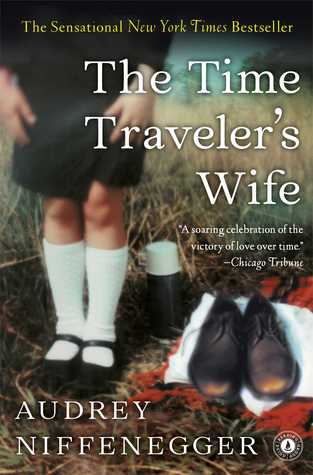Review: Audrey Niffenegger’s “The Time Traveler’s Wife”
by Miles Raymer

I had a wonderful time losing myself in the pages of Audrey Niffenegger’s The Time Traveler’s Wife. This clever and enthralling story swept me away in exactly the fashion one hopes a good romance will do. Niffenegger’s bonafide page-turner contains many excellent qualities: an elegant and well-executed conceit, deft characterization, and captivating writing. When it comes to my personal tastes, I wouldn’t call it a “great” novel, but by any standard it’s damned good.
The centerpiece of The Time Traveler’s Wife is the weird and poignant love affair of Henry DeTamble and Clare Abshire. The novel hops back and forth between their perspectives, both of which are delivered in first person. Due to a chronological idiosyncrasy of unknown origin, Henry travels through time sporadically, moving in and out of the novel’s various timelines at unpredictable moments. In his own words:
I don’t do anything. It just happens. I can’t control it, I just––one minute everything is fine, the next I’m somewhere else, some other time. Like changing channels. I just suddenly find myself in another time and place. (311)
This quality makes Henry both elusively charming and frustratingly ephemeral––a real heartthrob. Clare is your typical female protagonist, and not at all in a bad way; her comparatively linear existence is just as rich and engaging as Henry’s. To say much about why and how their relationship develops would get us into spoiler territory, but suffice it to say that it’s both a lot of fun and also tear-jerking at all the right moments. Niffenegger nails the romantic tension and adroitly develops the love affair over many decades.
My favorite aspect of the novel is how time seems to be a character with its own needs and agenda. This isn’t quite an original idea, but I’ve never seen it depicted this way before. On one hand, Henry and Clare experience a shared life of totally absurd and unique situations, with time’s inexplicable whimsy constantly undermining their agency. But on the other hand, they’re just like everyone else, caught in time’s one-way onslaught, borne inescapably to their respective fates. Here’s a nice example of how Niffenegger writes about time:
As I wrap my hair in a towel I see myself blurred in the mirror by steam and time seems to fold over onto itself and I see myself as a layering of all previous days and years and all the time that is coming and I suddenly feel as though I’ve become invisible. But then the feeling is gone as fast as it came and I stand still for a minute and then I pull on my bathrobe and open the door and go on. (148)
The Time Traveler’s Wife is peppered with passages like this––nothing too fancy from a literary perspective, but precise and comfortingly relatable.
The book has a handful of weaknesses, all of them relatively benign. Although Niffenegger’s core characters are excellent, many of the supporting ones feel forgettable to the point of superfluidity. The novel could have been significantly shorter and still packed the same punch. I was also disappointed by Niffenegger’s decision to link Henry’s “condition” to genetics. This pseudo-explanation inserts an incongruous element of science fiction that is likely to annoy scientifically-literate readers. Better, in my view, to treat the central conceit as just that and fully embrace this delightful work of romantic fantasy.
All in all, The Time Traveler’s Wife is a lovely book, one I’m sure to recommend to many friends and family members. It’s a touching reminder of the importance of love and connection in our short but vibrant little lives:
Our love has been the thread through the labyrinth, the net under the high-wire walker, the only real thing in this strange life of mine that I could ever trust. (515)
Rating: 7/10
I think you captured this book perfectly Miles – thanks so much for the numerous great suggestions I have read because of your fine blog.
Hi Bill! That really means a lot and I’ll do my best to keep ’em coming! Thanks as always for your readership. 🙂